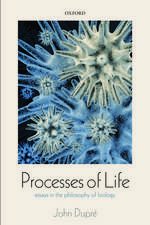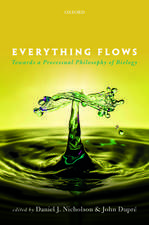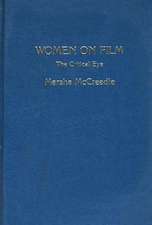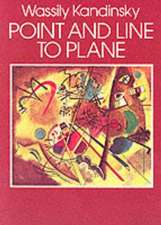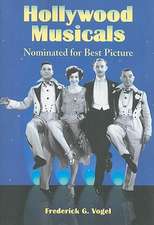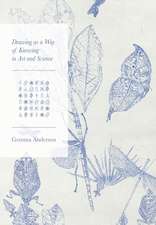Drawing Processes of Life: Molecules, Cells, Organisms
Editat de Gemma Anderson-Tempini, John Dupréen Limba Engleză Paperback – 2024
An artist sketching cell division faces a problem: what is the best way to visually represent a dynamic process? This anthology, edited by an artist and a philosopher of science, explores drawing as a way of inquiring into living processes at the molecular, cellular, and organismal scale. In doing so, drawing emerges as a tool for relaying and uncovering knowledge—a pathway for research, not an end result.
Incorporating drawing studies and contributions from scholars in the humanities and life sciences, Drawing Processes of Life addresses epigenetics, epistemology, and metamorphosis in insects, proteins, and other ever-shifting biological systems. A foreword by Scott F. Gilbert, a renowned evolutionary biologist and historian of science, affirms the promise of interdisciplinary collaboration between artists and scientists.
Preț: 251.48 lei
Nou
Puncte Express: 377
Preț estimativ în valută:
48.13€ • 49.60$ • 40.64£
48.13€ • 49.60$ • 40.64£
Carte disponibilă
Livrare economică 11-25 februarie
Livrare express 25-31 ianuarie pentru 45.02 lei
Preluare comenzi: 021 569.72.76
Specificații
ISBN-13: 9781789387667
ISBN-10: 1789387663
Pagini: 362
Ilustrații: 32 color plates, 78 halftones
Dimensiuni: 170 x 244 x 28 mm
Greutate: 0.8 kg
Editura: Intellect Ltd
Colecția Intellect Ltd
ISBN-10: 1789387663
Pagini: 362
Ilustrații: 32 color plates, 78 halftones
Dimensiuni: 170 x 244 x 28 mm
Greutate: 0.8 kg
Editura: Intellect Ltd
Colecția Intellect Ltd
Notă biografică
Gemma Anderson is an artist and research fellow at Egenis, the Centre for the Study of Life Sciences, University of Exeter. John Dupré is professor of philosophy of science at the University of Exeter and director of Egenis, the Centre for the Study of Life Sciences.
Cuprins
Foreword, ‘Symbiotic Perspectives on the Processes of Biology and Art’, Scott F. Gilbert
Introduction, Gemma Anderson and John Dupré
Chapter 1: ‘Conrad H.Waddington and the Image of Organicism’ Katharina Lee Chichester, Humboldt University, Berlin
Chapter 2: ‘Drawing to extend Waddington’s epigenetic landscape’ Gemma Anderson, Johannes Jaeger and Berta Verd
Chapter 3: ‘Drawing as a Pragmatist Visual Epistemology’ Chiara Ambrosio
Chapter 4: ‘Drawing the Origami Embryo as a Stratified Space-Time Worm’ Gemma Anderson and Alessio Corti
Chapter 5: ‘Drawing the dynamic nature of cell division’ Gemma Anderson, James Wakefield and John Dupré
Chapter 6: ‘Drawing as intuitive mode for representing protein dynamics’ Gemma Anderson, Jonathan Phillips and John Dupré
Chapter 7: ‘Drawing out the (super)organism: Artistic intervention and the amplification of processes of life’ Heather Barnett
Chapter 8: ‘Mimicry, Adaptation, Expression’ Wahida Khandker
Chapter 9: ‘Metamorphosis in Images. Insect Transformation from the End of the Seventeenth to the Beginning of the Nineteenth Century’ Janina Wellmann
Chapter 10: ‘Flow, attend, flex: reintroducing a process-oriented approach to cell biological research’ James Wakefield
Chapter 11: ‘Forging New Biologies through New Art: An Afterword’ Sarah Gilbert and Scott F. Gilbert
Introduction, Gemma Anderson and John Dupré
Chapter 1: ‘Conrad H.Waddington and the Image of Organicism’ Katharina Lee Chichester, Humboldt University, Berlin
Chapter 2: ‘Drawing to extend Waddington’s epigenetic landscape’ Gemma Anderson, Johannes Jaeger and Berta Verd
Chapter 3: ‘Drawing as a Pragmatist Visual Epistemology’ Chiara Ambrosio
Chapter 4: ‘Drawing the Origami Embryo as a Stratified Space-Time Worm’ Gemma Anderson and Alessio Corti
Chapter 5: ‘Drawing the dynamic nature of cell division’ Gemma Anderson, James Wakefield and John Dupré
Chapter 6: ‘Drawing as intuitive mode for representing protein dynamics’ Gemma Anderson, Jonathan Phillips and John Dupré
Chapter 7: ‘Drawing out the (super)organism: Artistic intervention and the amplification of processes of life’ Heather Barnett
Chapter 8: ‘Mimicry, Adaptation, Expression’ Wahida Khandker
Chapter 9: ‘Metamorphosis in Images. Insect Transformation from the End of the Seventeenth to the Beginning of the Nineteenth Century’ Janina Wellmann
Chapter 10: ‘Flow, attend, flex: reintroducing a process-oriented approach to cell biological research’ James Wakefield
Chapter 11: ‘Forging New Biologies through New Art: An Afterword’ Sarah Gilbert and Scott F. Gilbert


